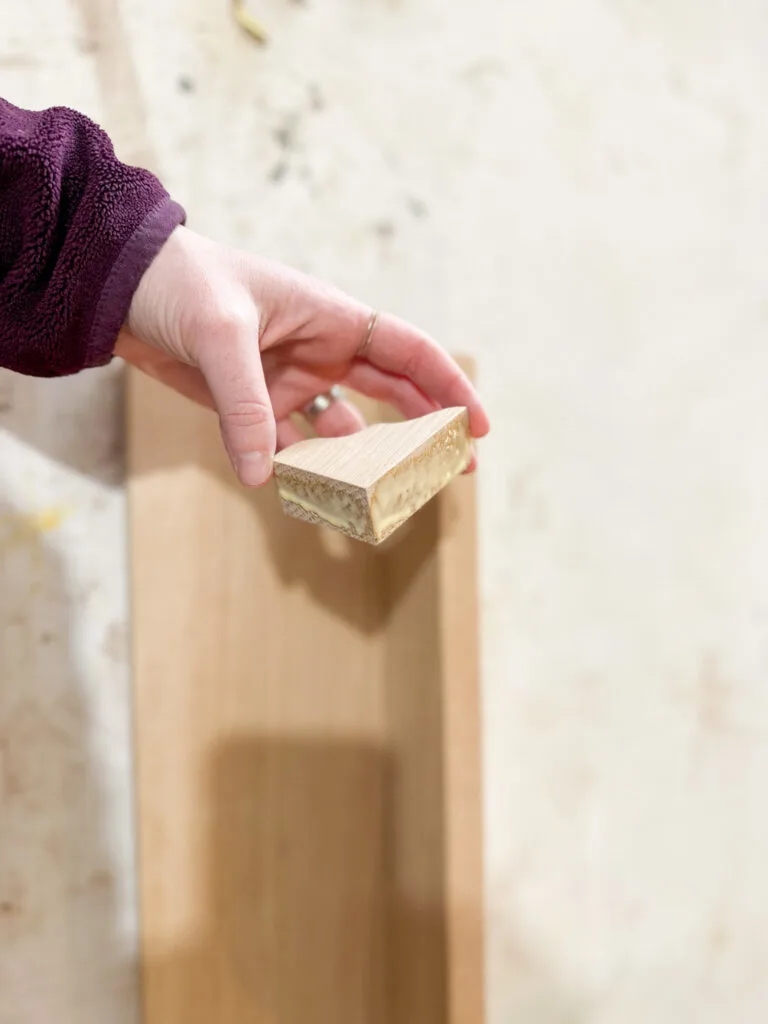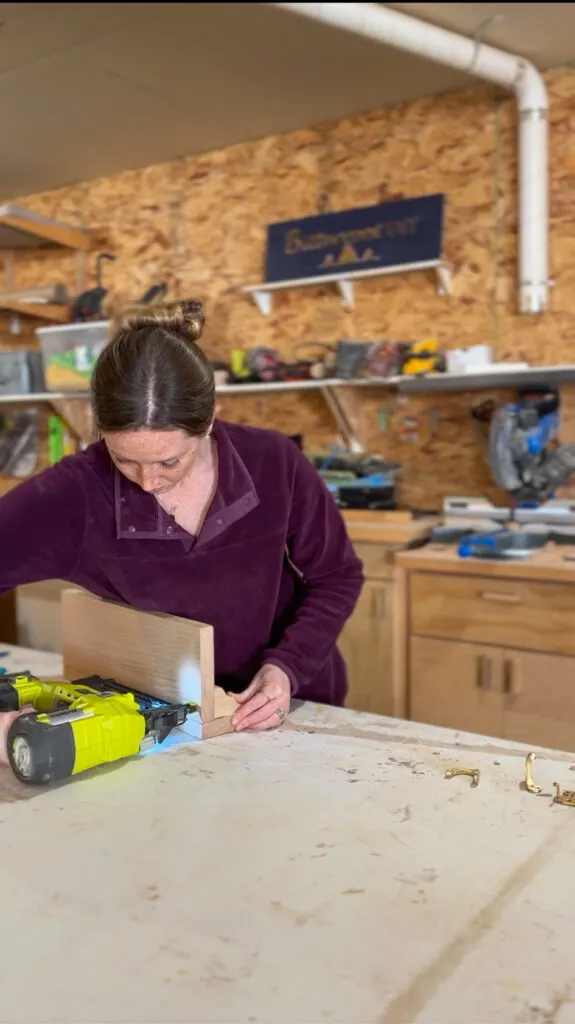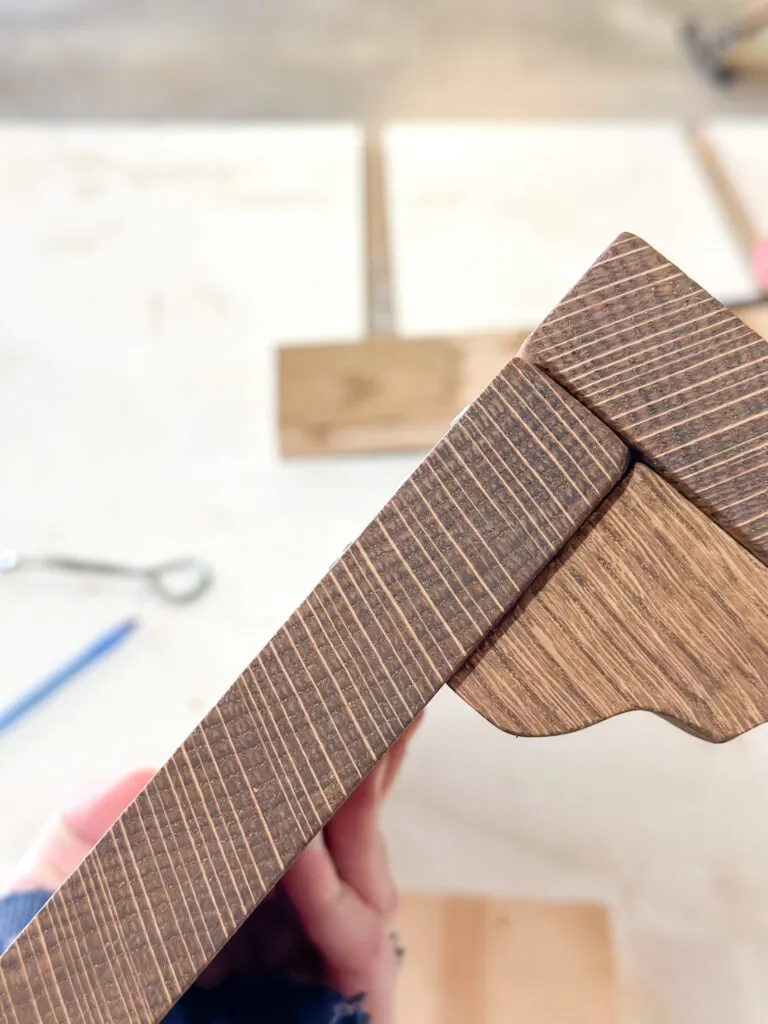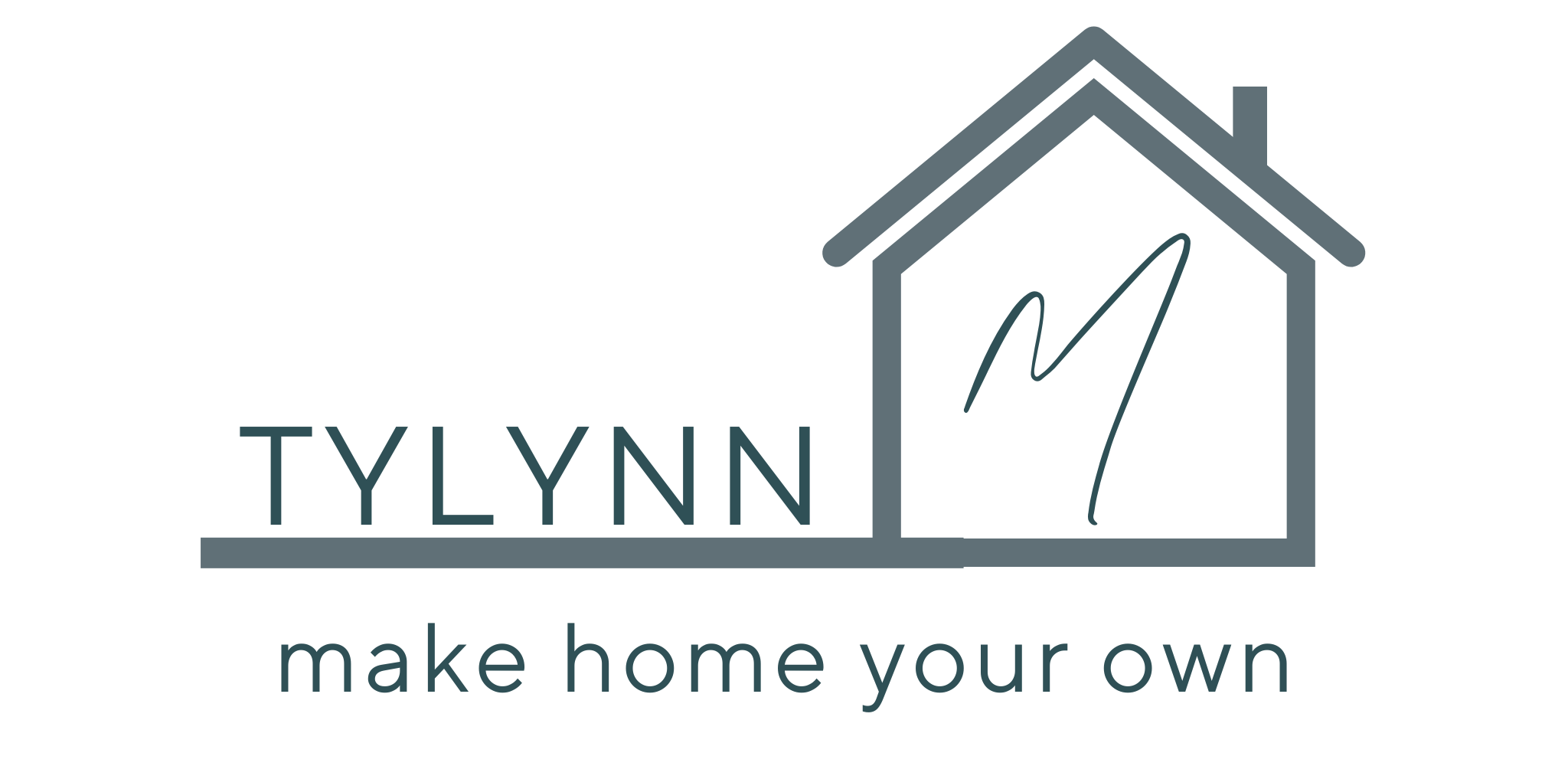Keep your entryway neat and organized with this DIY entryway shelf inspired by Arhaus.

This post contains affiliate links. If you make a purchase from one of the links, I may make a small commission at NO EXTRA COST to you. Thank you for your support! See my full disclosure here.
Our entryway situation is a little goofy. We have an attached garage, but it was added after the house was initially built and they didn’t add a door to get directly into the house. Someday we hope to add a door directly into the house, but for now, we usually go out the garage door and through the back door to get inside the house. However, the only sort of mudroom area is a small closet by the front door. So we usually end up going through the back door, then across the house to the front door to hang coats. I know. It makes no sense. But you get used to it after a while 😅 Someday we’ll have a mudroom! Somedayyy.
For now, I put together a small entryway area by the back door. There’s a bench for everyone to take shoes on and off and an area to keep our most used shoes – which, of course, means ALL the shoes until either Joseph or I finally cleans them up and gets it back to just the most used shoes. You know how it goes. Then we usually take coats over to the front closet.
The only thing we were missing was a spot for the keys. We’ve been keeping them in a bowl in the coffee cabinet/hutch in the kitchen, which is right by the back door. But the other day, I was wondering through the local antique store and found the cutest little duck key rack. I built a small entryway shelf to go with it, added a couple extra hooks, and voila – a spot for keys and my purse!
Inspo
I found this shelf from Arhaus for inspiration:

How cute is that little corbel detail on the side?! I knew I had to include something similar.
- Brass Hooks (found mine at Hobby Lobby, but here are similar from Amazon or Home Depot)
- Key Rack (you can find similar ones from shops on Amazon or Etsy [Etsy #1, Etsy #2])
- Keyhole Hangers
- Miter Saw
- Table Saw (optional)
- Brad Nailer
- 1 1/4″ Brad Nails
- Tape Measure
- Wood Glue
- Clamps (optional)
- Speed Square
- Pencil
- Safety Glasses
- Ear Protection
You can find video of this project saved to my Instagram highlights, under “entryway shelf”. I also saved a quick snapshot of it to my reels.
Step 1. Cut
I had an extra piece of white oak that I ended up using for this shelf, but you can build it with any kind of wood. I cut the oak to 18″ long to fit this little spot by the back door and then ripped the boards to 5 1/2″ wide and 3 1/2″ wide. If you don’t have a tablesaw, use a 1×6 for the bottom board and a 1×4 for the top – that will give you the same dimensions (1x6s are 5 1/2″ wide and 1x4s are 3 1/2″ wide). You can always adjust the length as necessary to fit your space.
Once the boards were cut, I sanded them with 120 grit sandpaper.
Step 2. Glue + Brad Nail
Then I used wood glue and brad nails to attach the top shelf the to the bottom board.

I know it looks like my hand is in a dangerous spot here where a rogue nail might shoot out and hit it. But, I assure you, the nails weren’t that long and my fingers were not in danger. Always keep your hands and fingers clear of the path of the nail in case one shoots out.
Step 3. Cut Corbels
I used an extra cutoff from ripping down the shelves for the corbels. It’s the same size as a 1×2 so, again, if you don’t have a table saw, you can just grab a small 1×2 for these!
I used the shelf as the template and marked the edge of the top shelf, then measured about 1/4″ shorter and marked it on the 1×2. That gives the shelf a 1/4″ overhang over the bracket. I freehanded the shape of the corbel and cut it out with a jig saw.



A band saw would be really nice for this since the blade stays perfectly perpendicular at all times, though you can make a jig saw work. Just take care to make sure the blade stays straight up and down.
I traced the first cutout corbel to give me the outline for the second corbel and then cut it out with the jig saw as well.


They were a little tricky to sand since they’re so small. I found it worked great to use a corner cat sander (little less aggressive than an orbital sander) and finished it up by hand.
Step 4. Attach Corbels
I set the corbels about 1/4″ in from each end of the entryway shelf and attached them with wood glue and brad nails. Honestly, you could probably get away with just wood glue. But I didn’t want to wait for it to dry, so I put a brad nail in each side so I could keep working 😅 Ain’t nobody got time to watch glue dry.




Again, I know it looks like really bad placement of my hands. But the nails were not long enough to reach my fingers, even if they shot out unexpectedly. Promise.
I wasn’t really sure how the jigsaw method was going to work out, but, after some sanding, they turned out so cute!

Step 5. Hanging Hardware
I went with keyhole hangers to hang this entryway shelf so that it’s perfectly flush with the wall. You can use any kind of hardware you prefer, or just screw it to the wall.
I routed out a 1/16″ deep groove to fit the whole keyhole hanger (the entire ellipse). And then routed a 1/8″ deep groove in the center for the keyhole so the wall screw can sit inside it.



The keyhole hanger is perfectly flush with the shelf (far right photo). And the keyhole has a gap for the wall screw (middle photo).
Step 6. Wood Finish
Time for stain. Or whatever wood finish you prefer!

From left to right: Minwax Chestnut Gel Stain, Minwax Provincial, Minwax Early American.
I did a few samples on a scrap board and settled on Minwax Provincial to match the mantel on the new fireplace (tutorial coming soon). Then I sealed it with satin polycrylic.
Step 7. Hooks
After the stain and polycrylic dried, I attached the hardware. Some basic brass hooks to compliment the thrifted duck key rack.

Step 8. Hang It Up
And here it is – the perfect addition to this little spot!


As always, please let me know if you have any questions!
| Tylynn |
Don’t forget to pin for later!

